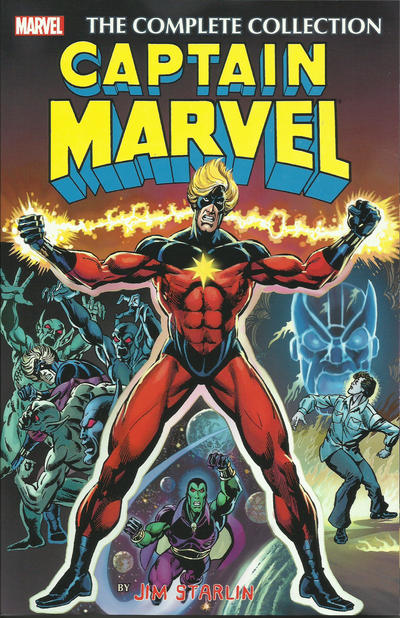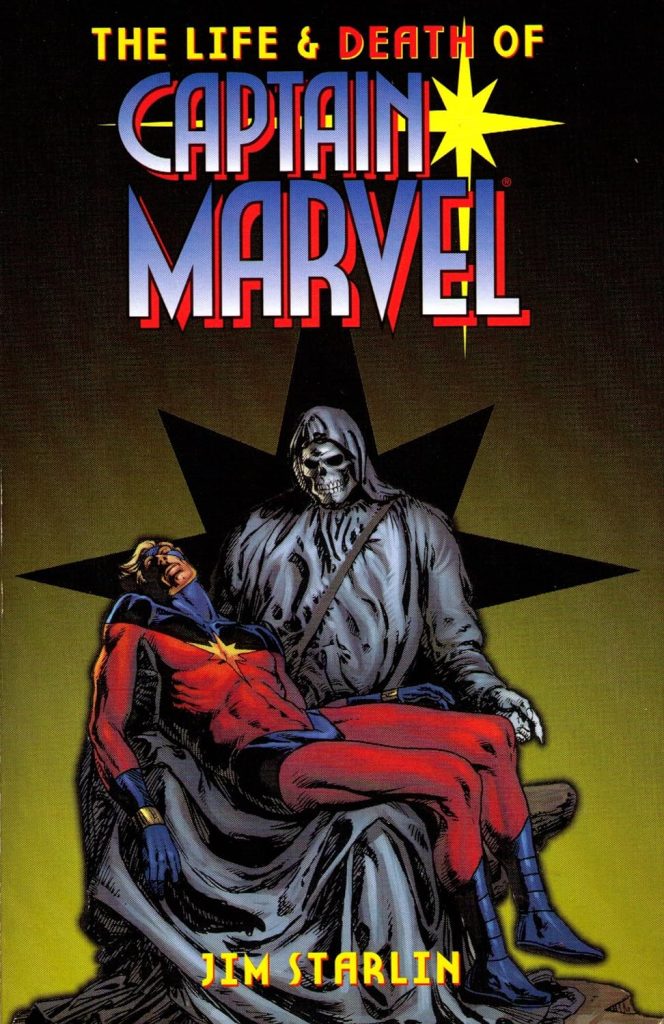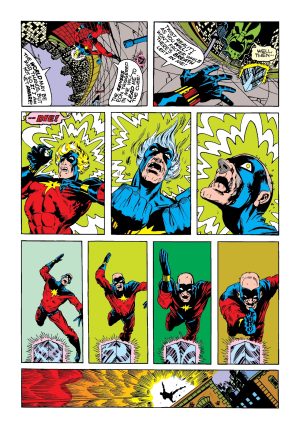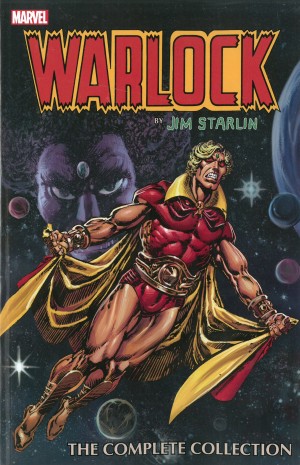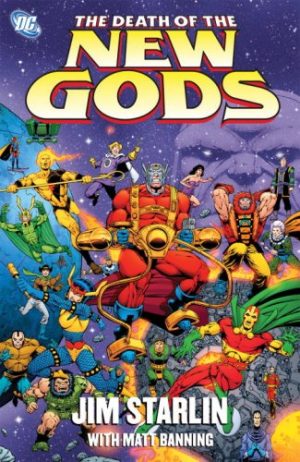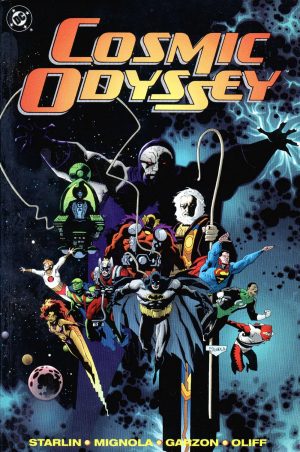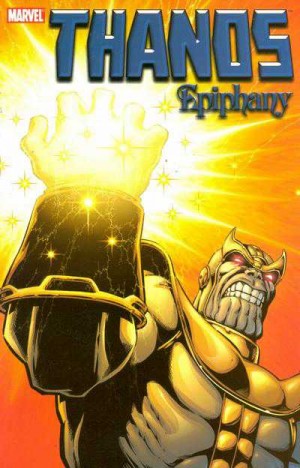Review by Frank Plowright
In 1972 Jim Starlin was a raw creator very taken with the conceptual power of Jack Kirby’s work, and Captain Marvel was a character whose comic had been cancelled several times and who didn’t generate any great interest among Marvel’s top talent. Their union was critically acclaimed, but wasn’t a great commercial success at the time, yet has paid for itself many times over in numerous reprints since. It’s become a Marvel landmark, although set against Starlin’s subsequent work it’s a trial run that hasn’t aged well despite being hugely influential.
Starlin’s view of the Marvel universe wasn’t constrained by New York, nor indeed Earth itself. His vision of superhero sagas played out against the greater canvas of outer space and alien races, and while the quality varied over the years there can surely be no argument that there’s a direct line from his creativity to the massively successful Avengers films from 2010 onwards.
His opening shot was the introduction of Thanos and Drax the Destroyer to Iron Man, after which Captain Marvel and Rick Jones gradually became embroiled in Thanos’ plans for his homeworld and beyond. While Captain Marvel has his problems, the Kree warrior’s power set was considerably in advance of most beings he was likely to encounter on Earth, but against Thanos he was out of his depth, so Starlin gave him an upgrade via the nebulous concept of cosmic awareness. The final couple of issues of their confrontation are still thrilling, and who other than Starlin at Marvel in 1973 would have conceived the sample art? Beforehand, though, it’s very much Starlin learning on the job, gradually coming to terms with pacing a story and coping with the artistic requirements. However, it’s worth bearing in mind the material from the 1970s here consists of the first dozen comics Starlin produced, and as such the learning process is phenomenal. The dialogue improves for the jettisoning of Mike Friedrich, although Steve Englehart’s services are required in that capacity near the end.
Despite introducing interesting legacy villain Nitro, Starlin’s final series work isn’t his finest writing or art, but Mar-Vell’s exposure to radioactive substances has an effect Starlin returned to several years later with a story raising the collection’s quality. When The Death of Captain Marvel was published in 1982, the idea of a superhero dying of cancer was a brave step into the unknown, yet avoided the possible pitfall of offence by trivial treatment of real world upset. Cancer has since been avoided in superhero comics for a major character until Jason Aaron’s time on Thor thirty years later. Starlin’s art is ambitiously constructed, if often featuring sloppy anatomy, and this remains a respectful look at the heartbreak endured by so many. There is some superhero action, but the bulk deals with Captain Marvel making his peace and saying his farewells.
The earliest stories don’t hold up, but try matching them against the first dozen published stories written and drawn by any other American comic creator and prepare to be impressed.
Only the inclusion of a few pages providing an origin for Moondragon separates this collection from the 2002 volume The Life and Death of Captain Marvel. That’s the title also used for splitting this material including an an additional Avengers story over two volumes of the partwork the Ultimate Graphic Novels Collection. The 1970s stories can also be found as Marvel Masterworks: Captain Marvel Volume 3, and in Essential Captain Marvel Vol. 2. Much is also in Avengers versus Thanos.
